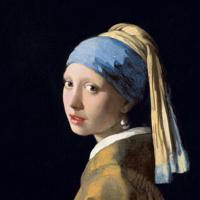
The Art Vault
The #1 Virtual Art Gallery Contact: @Liang_Zhuge Buy Ads: https://telega.io/c/painting
نمایش بیشتر69 250
مشترکین
-7524 ساعت
-5137 روز
-2 15730 روز
- مشترکین
- پوشش پست
- ER - نسبت تعامل
در حال بارگیری داده...
معدل نمو المشتركين
در حال بارگیری داده...
Photo unavailableShow in Telegram
🎨 El arado, 1901
by Martín Malharro 🇦🇷
Oil on canvas. 27.3 x 41 cm
National Museum of Fine Arts, Argentine
About the artwork:
"El arado" likely features a scene of rural labor, specifically focusing on the act of plowing. Malharro’s depiction would emphasize the relationship between man and nature, showcasing a farmer working the land with a plow, possibly pulled by oxen or horses. This theme resonates with the nationalistic focus on the land and its cultivation, which was central to Argentine identity and economic life at the time.
❤ 44👍 6👏 5🔥 3👀 1
Photo unavailableShow in Telegram
🎨 Botafogo Beach, c.1870
by Eduardo de Martino 🇮🇹
Oil on canvas. 43.6 x 75.3 cm.
Pinacoteca do Estado de São Paulo, Brazil
About the artwork:
"Botafogo Beach" likely depicts the famous beach located in Rio de Janeiro, known for its stunning natural beauty with the backdrop of Sugarloaf Mountain. During the 19th century, this area was a popular subject for artists, capturing the allure of Rio’s coastline which was undergoing significant transformations with the arrival of European influences.
❤ 74👍 14🔥 8👏 3👀 1
Photo unavailableShow in Telegram
🎨 The scream (2nd version), 1893
by Edvard Munch 🇳🇴
Oil tempera and pastel on cardboard. 91 x 73 cm.
National Gallery, Norway
About the artwork:
The painting depicts a figure standing on a bridge with a tumultuous sky swirling above. The background is a blood-red sunset over Oslofjord, viewed from the hill of Ekeberg, in Oslo. The central figure, clasped hands on the sides of its face, opens its mouth in a wide scream, while the lines of the landscape and sky around it flow with a similar intense emotion.
❤ 55👍 31👏 13🔥 5👀 1
Photo unavailableShow in Telegram
🎨 Early Morning After a Storm at Sea, 1900–1903
by Winslow Homer 🇺🇸
Oil on canvas. 76.8 x 127 cm.
Cleveland Museum of Art, USA
About the artwork:
In "Early Morning After a Storm at Sea," Homer captures the tumultuous yet subsiding energy of the ocean as it calms from a recent storm. This scene likely features the vast expanse of the sea under the early morning light, with waves still showing the remnants of the storm's force but beginning to soften as the day begins. The sky, possibly clearing, may show the warm hues of sunrise filtering through the clouds, suggesting a renewal after the chaos of the storm.
👍 36❤ 24🔥 14👏 2
Photo unavailableShow in Telegram
🎨 Wrestlers in a Circus, 1909
by Ernst Kirchner 🇩🇪
Oil on canvas. 80.5 x 94 cm.
Cleveland Museum of Art, USA
About the artwork:
In "Wrestlers in a Circus," Kirchner captures the dynamic movement and physicality of wrestlers engaged in a match, set against the backdrop of a circus environment. This setting would allow Kirchner to explore themes of performance and spectacle, reflecting his interest in the interplay between public display and personal struggle.
❤ 30👍 7🔥 7👀 2
Photo unavailableShow in Telegram
🎨 Máscara, 1941
by Candido Portinari 🇧🇷
Oil on card. 27 x 25 cm.
Cultural Pinakotheke, Brazil
About the artwork:
Given the dimensions and medium of the work, Portinari may have employed a detailed, almost intimate scale that draws the viewer into a close engagement with the subject. This approach would be effective in evoking a personal reaction from the viewer, encouraging them to consider the deeper meanings behind the façade or "mask" presented.
❤ 33👍 18👀 7🔥 3👏 2
Photo unavailableShow in Telegram
🎨 Spruce, 1893
by Ferdynand Ruszczyc 🇵🇱
Oil on canvas. 36 x 30.5 cm.
Lewben Art Foundation, Lithuania
About the artwork:
In "Spruce," Ruszczyc likely captures the solitary figure of a spruce tree, set against a subdued, perhaps wintery backdrop. This painting would focus on the tree's enduring and resilient nature, using it as a central symbol of strength and perseverance. The choice of a spruce, a tree known for its hardiness and association with northern climates, further emphasizes themes of solitude and survival.
❤ 76👍 16👀 5🔥 3
Photo unavailableShow in Telegram
🎨 Wanderer in the Storm, 1835
by Julius von Leypold 🇩🇪
Oil on canvas. 42.5 x 56.5 cm
Metropolitan Museum of Art, USA
About the artwork:
"Wanderer in the Storm" likely depicts a lone figure braving a severe storm in a rugged landscape. This subject is emblematic of the Romantic spirit, showcasing the struggle and resilience of humanity against overwhelming natural forces. The painting would typically feature dark, brooding skies and a windswept terrain, using a palette dominated by dark grays and browns to convey the storm's intensity and the mood of isolation.
❤ 32🔥 30👍 17👀 3
⭐️ Telegram rating system is coming! Subscribe: @Major 🫡
Major
Hello, future major! Welcome to @Major⭐️ Your task is to become the best of the best in the player rating. Vote for others by stars and collect stars yourself⭐️ The coolest majors will receive a valuable token in the future!
👀 5👍 3
Photo unavailableShow in Telegram
🎨 The Adoration of the Shepherds, c. 1605 – 1610
by El Greco 🇬🇷
Oil on canvas. 144.5 x 101.3 cm.
Metropolitan Museum of Art, USA
About the artwork:
"The Adoration of the Shepherds" depicts the biblical scene of the shepherds visiting the newborn Jesus, a common subject in Christian art symbolizing humility and divine revelation. In this scene, El Greco likely portrays the shepherds in a moment of awe and reverence as they witness the birth of Christ, highlighted by the supernatural light emanating from the infant, which illuminates the surrounding figures and landscape.
❤ 39👍 16🔥 10👀 1
یک طرح متفاوت انتخاب کنید
طرح فعلی شما تنها برای 5 کانال تجزیه و تحلیل را مجاز می کند. برای بیشتر، لطفا یک طرح دیگر انتخاب کنید.

 Network:
Network: